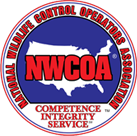SNAKES
Common Concerns & Safety Issues
Possible venomous bites, prey on poultry, and interferes with local wildlife.
Don't guess when identifying, call in the experts!
Customers & Locations
Parks
Athletic Fields
Golf Courses
Lake Front Properties
Private Communities
Industrial Sites
Athletic Fields
Golf Courses
Lake Front Properties
Private Communities
Industrial Sites
Business Parks
Townships
County Governments
Boroughs
Schools
Municipalities
Townships
County Governments
Boroughs
Schools
Municipalities
Professional Solutions
- Program design
- Landscape alterations
- Relocation
- Limit food sources
Understanding the
SNAKE
| Grouping | Reptiles / Cold Blooded |
| Nicknames | Serpant, and @#$%^&*! ! |
| Best Known For | Snakes are known to show up when least expected and change their clothes by shedding their skin. Typically in your basement or attic. Would you change your pants in the middle of the street? Snakes are nature's mousetrap. |
| Venomous Snakes | Northern Copperheads, Timber and Eastern Massasauga rattlesnakes are the ONLY venomous snakes in the Northeastern US. |
| Life Span | Varies tremendously from a few to 20 years. |
| Mating Season | Spring to Fall depending on species. Rattlesnakes do not become sexually mature for as long as 7 years. |
| Reproductive Details | One litter per year with a few to dozens of young born per litter. Dependent upon species and environmental conditions. |
| Dispersal | Occurs from late summer through fall. Young snakes are often seen in abundance during this time. |
| Habitat Varies | Includes open meadows, water, rocky areas, forest areas, landscaped yards, flat paving stones, concrete porch slabs, bark mulch beds, gold fish ponds, rock walls and your basement or attic. |
| Activity Cycle | Active day and night from April through October. Due to freezing winter temperatures, snakes are typically found below grade in natural and manmade cavities (i.e. porch slabs, crawl spaces, hollow block walls). Where temperatures range in the low 50's to low 60's. |
| Food & Growth | Snakes are carnivorous and eat small insects to small and medium sized rodents. Snakes will also feed on other snakes, amphibians, birds and eggs. You are not on the menu! Snakes shed their skin as they grow. Young snakes may shed their skin up to 4 times a year while adults may only shed 1 or 2 times per year. |
| Damage Signs | Snakes do not damage structures and do not dig holes (they have no arms, legs, hands or feet). However, they do take advantage of construction gaps, and holes created by other animals. Including but not limited to mice, rats, chipmunks, squirrels, and areas of damage, decay, and disrepair. |
| Treatment | Limit food sources and shelter or landscape alterations. Trapping and relocation through the use of specialty traps including glue and polypropylene netting. Polypropylene netting works by entangling the snake as it threads itself through the material like a string through fabric. Snakes can be released unharmed from glue boards with baby or mineral oil applied directly to the glue surface. Sealing off entry into the structure. Chemical repellants provide very limited benefits and are mostly a placebo. Let's learn to appreciate the benefits of having snakes around. |
| Distinguishing Features | Many snake species have similar appearances to other species often resulting in a large number of snakes being misidentified as a venomous snake. Most snakes identified as venomous are in reality harmless species. Juvenile snakes often look nothing like their adult counterparts. If in doubt, consult a professional. Your neighbor's identification is likely incorrect. |
| Risk | Non-venomous snakes provide little risk beyond self-inflicted pain caused by our attempts to vacate the premises during unexpected encounters. Remember, they do not carry a knife or a gun; teeth are all that they have. Venomous snakes would rather not bite you if they do not have to. If bitten venomous bites can be potentially life-threatening especially if treatment is delayed. |
| Snake Nests | Egg laying snakes prefer to nest or deposit their eggs in sand, soil, leaf litter, wood piles, stumps and mulch where eggs are protected. The decay of these organic materials creates the heat necessary to incubate the eggs which, unlike birds, are unattended by adult snakes. Nesting inside a home is uncommon. |
| Birth Styles | Live Birth: garter, eastern water, northern brown, copperhead,
timber rattlesnake, and eastern massasauga Egg Hatched: ring-neck, black rat, black racer, hognose, milk, and queens. |


Integrated Wildlife Management is our comprehensive and effective one-stop solution. This approach brings together the six necessary elements to successfully resolve wildlife / human conflicts and when possible, safely relocate wildlife to a more suitable habitat.


